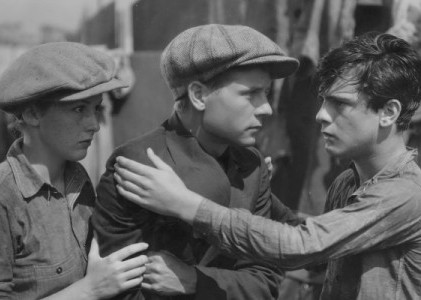Poetics of Motion
Giving three weeks to a 42-film retrospective of William "Wild Bill" Wellman's films, as Film Forum has done, isn't no-brainer programming. It's a statement of faith in a name that's never quite hit instant-recognition—a chance to re-evaluate a transient talent whose reputation has never settled down into place.
The campaign for Wellman has weathered many winters. Scott Eyman, introducing a Wellman interview in a 1978 issue of Focus on Film, wrote that "Probably no other director of comparable talent has been ignored and downgraded for so long." He's certainly taken his knocks: David Thomson, examining Wellman's fecund, inevitably uneven career in his Biographical Dictionary of Film, rhetorically concludes: "Maybe he was called Wild Bill because he was just out of order?" In Andrew Sarris's The American Cinema, Wellman is consigned to a dismissive paragraph in "Less Than Meets the Eye"—and more than 40 years after publication, Sarris's categorizations stick like tattoos, both he and Thomson's tomes being favorite sources of readymade epigrammatic opinion for novice cinephiles needing someone to stand behind when pulling down idols.
There is substantial evidence today that the tide is turning. We have word of a hefty Wellman book forthcoming from John Gallagher; marking Paramount Pictures' centennial, Wellman's Wings, the first Academy Award winner for Best Picture, arrived this January in a no-expenses-spared Blu-ray restoration; in Cinema Scope magazine, Andrew Tracy has done valuable work on the Gordian knot that is the "problems of classification" encountered with Wellman, primarily addressing the director's work from 1943's The Ox-Bow Incident onward.
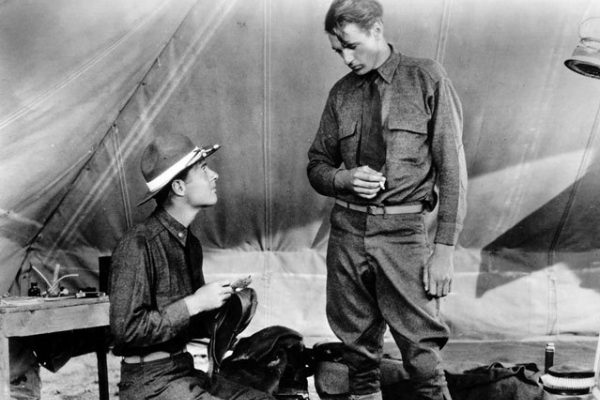
Richard Arlen and Gary Cooper in Wings
The qualities that Tracy speaks to in Wellman—the "precise yet inexplicable patterns of movement, strange geographies inscribed within seemingly comprehensible landscapes, the creation of odd, private little problems which Wellman ‘solves' with his own arcane mathematics"—are the sort of dog-frequencies to which Wellman's most consistent and eloquent defender, Manny Farber, kept his ear cocked. Farber praised The Ox-Bow Incident and The Story of G.I. Joe in The New Republic, and gave "Wild Bill" his most enduring, quizzical tribute in 1957's Underground Films: "In any Bill Wellman operation, there are at least four directors—a sentimentalist, deep thinker, hooey vaudevillian, and an expedient short-cut artist....Wellman is at his best in stiff, vulgar, low-pulp material. In that setup, he has a low-budget ingenuity, which creates flashes of ferocious brassiness, an authentic practical joke violence, and a brainless hell-raising..."
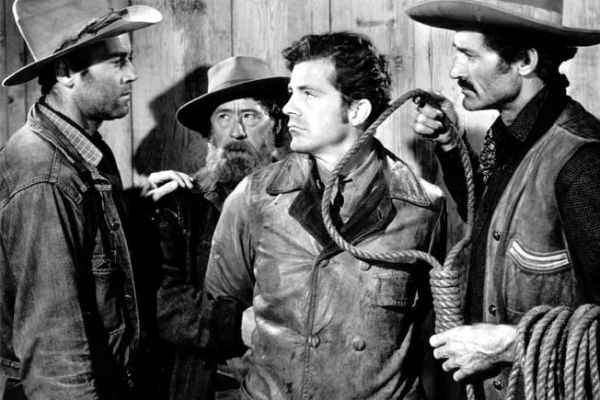
Dana Andrews in The Ox-Bow Incident
By all accounts plenty prone to brainless hell-raising in his adult life, William Augustus Wellman was born to a solid, upper-middle-budget family—his great-great-great grandfather was a Declaration of Independence signer—in Linden Place, Brookline, Massachusetts. This was in 1896, so Wellman was just the age to absorb the strenuous, boisterous, Field & Stream presidency of Theodore Roosevelt who, along with Kipling, was the single greatest influence on that legendary generation of American adventurer-directors reared at the turn of the 20th century. Wellman later recollected a wayward boyhood of knockabout prankery that got him bounced out of high school. It was a short hop from juvenile court to a stint as a professional hockey enforcer, in which capacity Wellman, playing at Boston Arena, caught the eye of a visiting, plausibly big-brotherly Douglas Fairbanks. After some abortive ventures in the commercial world, which evidently bored him, Wellman received the news of a declaration of war as do most young men with an itch for action, as a shining opportunity. He enlisted in the French Foreign Legion's flying corps, and he flew in the N. 87 Black Cat escadrille until he was downed by German anti-aircraft. (As a director later, Wellman retained this sense of adventuresome restlessness. He also still had trouble sticking his landings.)
Wellman finished out the war in the U.S. Air Force, training pilots at San Diego's Rockwell Field. Weekend visits to Fairbanks's Pickfair segued naturally into movie work, first as an actor—for Wellman was lean and had a striking profile under his unruly Irish thatch—then as director of B westerns for the likes of Dustin Farnum and Buck Jones. All of this is set down in Wellman's autobiography, A Short Time for Insanity; as that title suggests, there is an aspect of "Call me ‘Wild Bill'" self-mythologizing to Wellman's tales of turbulent "wenching, boozing and brawling." That larger-than-life legend has been sustained by the men that Wellman awed—son William Wellman, Jr., or onetime assistant Andrew V. McLaglen, later a director of macho actioners himself. Women seem to have been less taken in—Louise Brooks, star of Wellman's 1928 Beggars of Life, disapproved of the "quiet sadism practiced by Billy behind the camera, especially in his direction of women," while Irene Selznick, whose husband produced two of Wellman's best films, remembered "Wild Bill" as "a terror, a shoot-up-the-town fellow, trying to be a great big masculine I-don't-know-what. David had a real weakness for him. I didn't share it."
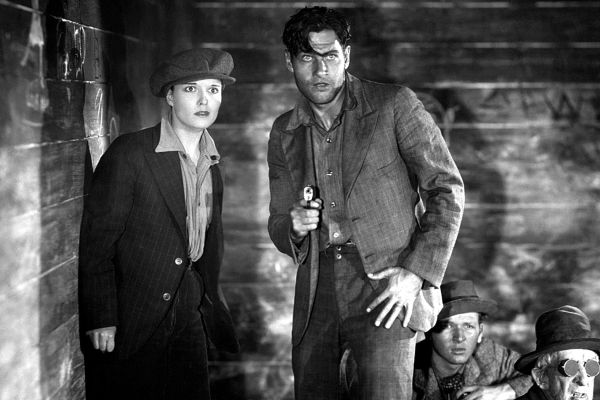
Louise Brooks and Richard Arlen in Beggars of Life
Most of Wellman's silent apprenticeship is today lost. The earliest work playing at Film Forum is 1926's Florence Vidor vehicle You Never Know Women. The cornerstone of Wellman's career and personal legend, however, is very much intact: 1927's Wings. Paramount's head of production, B.P. Schulberg, wanted someone with actual experience in the air to film a story of WWI aces by former flight instructor John Monk Saunders, and only the relatively green 29-year-old Wellman fit the bill. Schulberg's act of faith was rewarded with a hit, a film whose vertiginous, veracious aerial photography has never been bettered for conveying the naked, exhilarating, terrifying miracle of early aviation.
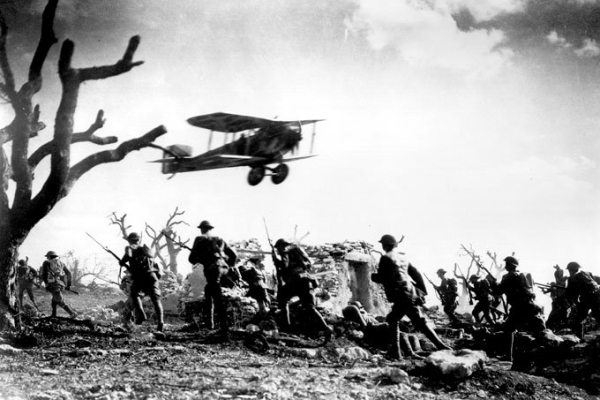
Wings
Wellman's other essential silent was Beggars, based on the Hobo Autobiography by the orphan and tramp turned memoirist, journalist, and novelist, Jim Tully (recently reissued by Kent State University Press). Wings's Richard Arlen plays a drifter who wanders into the scene of a murder, but when he discovers the circumstances—Lulu Brooks has killed her foster father to still his wandering hands—he takes her under his arm and on the road, where they run into Wallace Beery's Oklahoma Red, grand high mucky-muck of the hobos. Here we see a number of scenes, images, and themes that will recur in Wellman's films through years to come: the train, symbol of itchy wanderlust; the big bust-up brawl, here set in a boxcar; the big man brought to heel by a woman who matches his mettle; the empathetic treatment of all-American misfits and castaways ("Ain't it funny when you think of the millions o' people in warm houses and feather beds, an' us just driftin' 'round like the clouds?")
Beery starred for Wellman again in Chinatown Nights (1929) as "Chinatown's white Boss" Chuck Riley—a play on the real-life character of "Mayor" Chuck Connors, whom Beery would depict in Raoul Walsh's The Bowery four years later. (Like The Bowery, Chinatown Nights dabbles in the Wild East roughhousing of Herbert Asbury's barrelhouse, bad-old-days history The Gangs of New York which, replete with the legend of Connors, was published the previous year.)
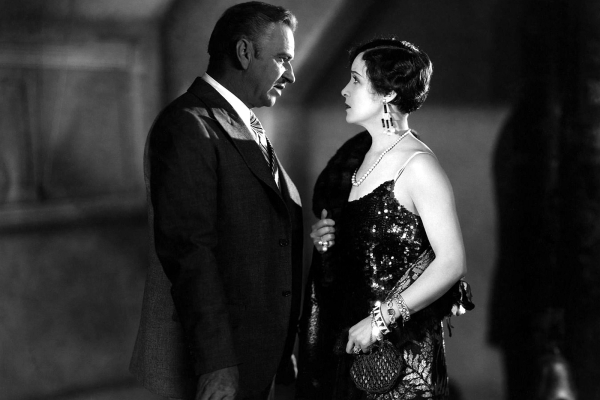
Wallace Beery and Florence Vidor in Chinatown Nights
Here it's slumming society gal Flo Vidor who tames the savage beast, Riley. Her voice overdubbed in her last screen role, Vidor didn't make the transition to sound—but Wellman did, with assurance. In 1929's Woman Trap, a melodrama about a cop (Hal Skelly) and his bootlegger brother (Chester Morris), there's a wonderful freedom to the early beat-walking scenes, where Wellman gives Skelly room to show off some of the crazy-legs business that made him a vaudeville star—this while many more experienced directors were still shooting talkies that stiffly clustered their casts around suspicious flower arrangements. Later, in a fight in a stalled freight elevator between Morris and a Fed, Wellman shows only the shuffling feet of the combatants—the selective depiction of screen violence that would become a trademark, most famously in the "I ain't so tough" offscreen shoot-out of The Public Enemy (1931).
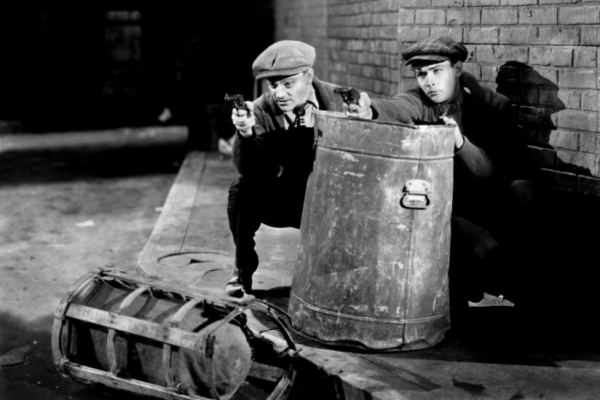
James Cagney (left) in The Public Enemy
After a protracted breakup with Paramount accompanied by the steady manufacture of films, including Young Eagles (1930)—per Wellman, his own toughest critic, "an attempt to make another Wings. It was frightful, a bad movie"—Wellman left for Burbank and Warners in 1931, where he saw eye-to-eye with production chief Darryl F. Zanuck. There Wellman also met a spring-heeled, Lower East Side-born hoofer and bit contract player, James Cagney, who played a small role opposite Grant Withers in Other Men's Women (1931), Wellman's first film for Warners. Cagney's centerpiece scene has him meeting a sullen, slouchy girlfriend at a dancehall coat-check, stripping off the brakeman's overalls over his "glad rags," then spinning her off her feet and onto the floor. The bit is excerpted in Routine Pleasures (1986), Jean-Pierre Gorin's paean to American genre film as seen through the filter of Farber's thinking, and Other Men's Women's natural-light images of hash-houses, trainyards, and pastoral suburbia evoke Farber's insight: "It may be a minor achievement, but, when Wellman finishes with a service station or the wooden stairs in front of an ancient saloon, there is no reason for any movie realist to handle the subject again."
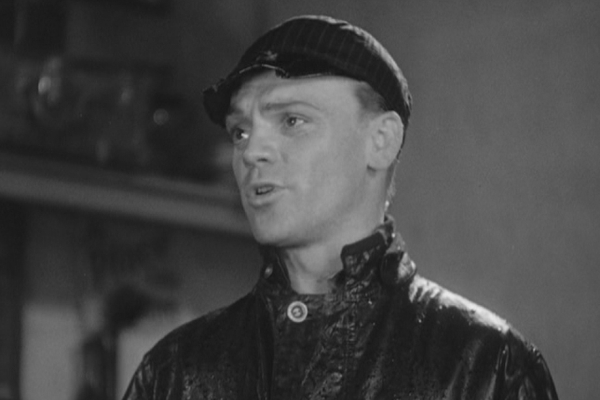
James Cagney in Other Men's Women
Cagney starred that same year in Wellman's The Public Enemy, one of the defining texts of the Warner Bros. house style. Did the studio style define Wellman, or the other way around? Regardless, it's at Warners that Wellman came into focus as the consummate small-ball player, prolifically dashing his signature onto a string of 70-odd-minute programmers. Bertrand Tavernier, another staunch Wellmaniac, reviewing the third "Forbidden Hollywood" DVD collection, composed of pre-Code Wellman films, for LA Weekly, enthused over the "extraordinary body of films Wellman made for Warner Bros. between 1931 and 1934, which are, for the most part, narcotics of energy, vitality, and dynamism. Those were qualities specific to that studio but which Wellman, who feared nothing, carried to the point of incandescence."
Safe in Hell, also '31, hops to with a whip-crack lead performance by Dorothy Mackaill, a former Ziegfeld girl who'd transitioned successfully from the silents, but was already, unfortunately, running out of pictures. A New Orleans escort, Mackaill goes feral when her arranged date for the night turns out to be Ralf Harolde, the cad responsible for her fall from respectability. Thinking she's killed him in a row, Mackaill hooks up with a sailor ex who's come into port, and who stashes her in a hotel in a Caribbean backwater with no extradition laws until her name is cleared. There, however, she attracts the unwelcome attentions of hangman Morgan Wallace and, like a medieval saint, must make the ultimate sacrifice to preserve her rediscovered chastity. The film's candor is striking, even for those accustomed to the heady pre-Joe Breen days; even more so is the fact that, in his treatment of black hotel staffers Nina Mae McKinney and Noble Johnson, as indeed at several points in his career, one gets a notion that Wellman held the radically democratic idea that non-whites weren't subhuman.
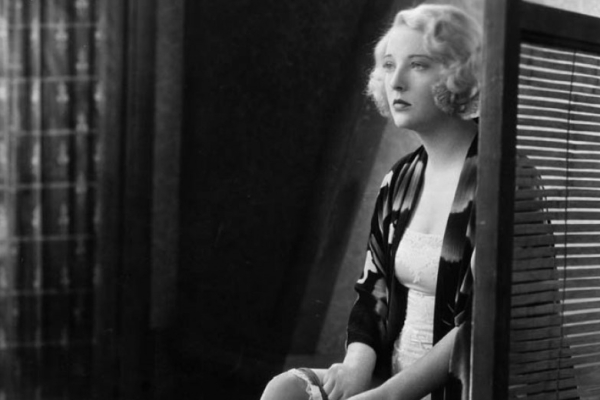
Dorothy Mackaill in Safe in Hell
The Star Witness (1931) was a soapboxy, anti-gangsterism social conscience picture that's bogged down by Walter Huston's office-bound speechifying, but Wellman's other great achievement of '31 has undeniable crackle. A windshield POV of an ambulance hurtling breakneck through city streets opens Night Nurse, the first of five films that Wellman made with Barbara Stanwyck. If Lulu Brooks was correct in appraising Wellman's misogyny, it's nowhere to be found here: the camera turns away when chauffeur Clark Gable backhands Stanwyck, but laps up her later walloping of cowering toper Walter McGrail.
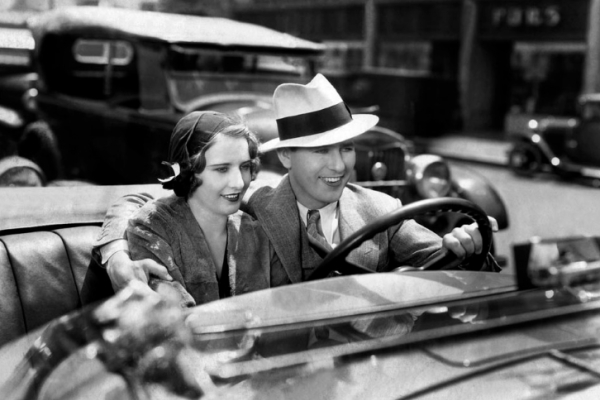
Barbara Stanwyck and Ben Lyon in Night Nurse
In the pragmatic back-and-forth between wised-up fellow nurses Stanwyck and Joan Blondell, as in Safe in Hell, Wellman is head-on in handling simple-math sexual opportunism and the erotic economics of hard times. "Isn't love the one thing you don't have to earn?" Stanwyck asks in The Purchase Price (1932), playing a nightclub torch singer who, in a desperate retreat from her checkered past, becomes a mail-order bride in North Dakota. (As in Night Nurse, every contingency is taken to show Stanwyck in her lingerie.) It's a nice thought, but the reality comes closer to the title of another Wellman of the period: Love Is a Racket (1932).
That racket is booming in 1932's Frisco Jenny, a lowlife epic with Ruth Chatterton in the eponymous role. Hostess of her father's rowdy beerhall in San Francisco's Tenderloin district, Jenny gets knocked up on the eve of the 1906 earthquake—vividly depicted in full shake and in aftershock—that swallows up the father-to-be. Fending for herself, Jenny turns to the world's oldest profession, becoming queen of vice on the Barbary Coast for 25 years before she's taken down by a straight-arrow District Attorney who calls for capital punishment...oblivious that she's the woman who gave birth to him in a Chinatown cellar.
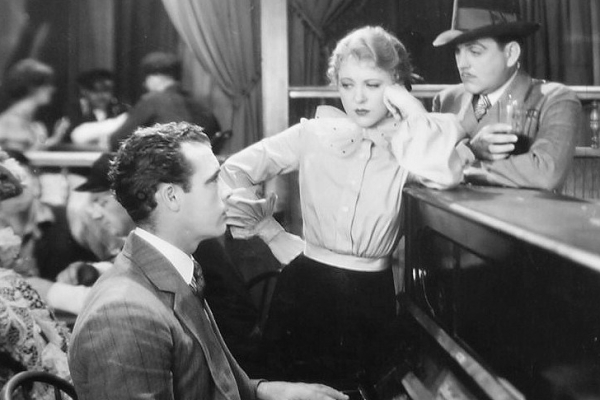
Ruth Chatterton in Frisco Jenny
Heroes for Sale (1933), another audaciously plotted, epoch-spanning underdog's history of the United States, stars Richard Barthelmess as Thomas Holmes, a veteran of the WWI trenches who, wounded and captured while displaying conspicuous battlefield courage, brings home a morphine addiction while another man brings back the medals that are rightfully his. In the course of Holmes's recovery and subsequent rise through the laundry business, this epic view of a life tossed about in the contortions of the still-young century visits with soup-kitchen skid row, a tongue-clucking card-carrying communist inventor (Robert Barratt), and representatives of paternalist and corporate capitalism, before erupting in out-and-out rioting.
Heroes was among seven movies directed by Wellman released in 1933, the last year before the Production Code, the first year of FDR's presidency. Those historical markers define another '33 movie that's Wellman's greatest claim to immortality, Wild Boys of the Road. If Heroes occasionally stretches for its scope, Wild Boys, likewise brimming with insurrectionist energy, is a natural. Eddie and Tommy (Frankie Darro and Edwin Phillips) are two Western teenagers whose "Aw, gee" lives of Sophmore Frolics and necking are cut short by the onset of Depression hard times, leading them to take to the rails, to make their own [way] and relieve their families of the burden. En route to Chicago, they collect tomboy Dorothy Coonan (soon the fourth or fifth Mrs. Wellman), while Tommy, fleeing railroad dicks, leaves a foot behind on the tracks. The incident of the lost foot, incidentally, appears in the great crime novelist Charles Willeford's 1988 reminiscence of a Wild Boys-like rail-riding adolescence, I Was Looking for a Street—and one of Willeford's long-fancied projects was a biography of Jim Tully, author of Beggars of Life. Following this associative chain, we see Wellman allied to a particular footloose and fringe-dwelling American tradition.
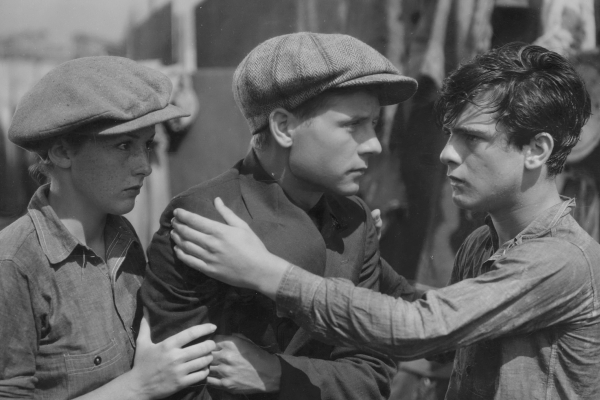
Dorothy Coonan, Edwin Phillips, and Frankie Darro in Wild Boys of the Road
The too-pat last reel of Wild Boys, which finds the lost kids snugly tucked into the loving embrace of the National Recovery Act, trades the institutional skepticism of Frisco Jenny and Heroes for Sale for straight-ahead New Deal boosterism—though it is capped by a wonderful piece of gonzo exuberance, as elated Darro, failed by words at their deliverance, suddenly launches into a chain of backflips and spins on his lightbulb-shaped noggin.
The compactly built son of a family of Chicago-based acrobats, Darro, bouncing into a jalopy or onto a moving train car, is the propulsive "Let's go" behind Wild Boys. Wellman's pre-Code movies are populated to an exceptional degree with dancers and tumblers: Skelly, Cagney, Mackaill, Stanwyck, and Darro all provided roisterous, elastic, dynamo performances, from which these movies' energy radiates. For Sarris, Wellman's preferred medium long shot was evidence of "the absence of a strong point of view," as "objectivity is the last refuge of mediocrity." But Wellman's framing alternately contours to and creates space for bodies in vital motion, so offering a brisk education in the lost tradition of full-bodied screen acting. (How many contemporary American actors' walks could you imitate? How many would you even bother to describe?)
Reviewing The Next Voice You Hear... in 1950, after Wellman had decamped to MGM and Dore Schary, Farber wrote of Wellman's "uncluttered surface[s] emphasizing actors' physicality, the screen dominated by American gesture, timed and obsessively watched so that the camera seems to ride freshly on top of movement." The kinetic logic in Wellman extends beyond recording performance, to the spiraling, nose-diving, barrel-rolling, barnstorming motion of the cockpit camerawork in Wings, with Arlen and "Buddy" Rogers doing triple-duty as actor/pilot/cinematographers; the tearing-ass ambulance at the top of Night Nurse; the box-cars shuttling back and forth between Beggars and Wild Boys, synchronizing with bodies in motion in the well-timed train-hop; and, in Wellman's most perfect scene of man-and-machine symbiosis, the opening of Other Men's Women. Grant Withers pops from the engine of his slow-passing train to scarf breakfast at a trackside diner, and his dialogue with the counter-girl ticks along to an internal metronome matched to the click-clack of the counted-off cars passing behind him—"17 to 18 to 19 to step on them eggs, gal, when I go, I gotta go fast"—and in this toe-tap rap, you can catch a prediction of the Beat cadence.
Asked to name the defining element of his films in a 1974 interview, Wellman responded succinctly: "I call it tempo....My pictures don't lag very much. If they were bad, they got over very quickly, I'll tell you that." These pre-Code works epitomize that tempo in their exhilarating two-take intuition, their abiding mood of energy impatiently waiting for expression. This may not constitute a complex authorial philosophy for Wellman, but it does show his poetics of motion—and these things are called movies, after all. ![]()
LATEST ARTICLES
-20140814-173707-thumb3.jpg)
Fighting Words
by Imogen Sara Smith
posted August 12, 2014

Fighting Words, Part 2
by Imogen Sara Smith
posted August 20, 2014

On the Margins: The Fil…
by Andrew Chan
posted August 12, 2014

Robin Williams: A Sense…
by David Schwartz
posted August 12, 2014
 Poetics of Motion
Poetics of Motion
KEYWORDS
William Wellman | studio system | Hollywood | Retrospective | film criticism | silent film | James Cagney | The Great DepressionTHE AUTHOR
Nick Pinkerton has written about films in The Village Voice, Reverse Shot, and Stop Smiling magazine. He is a product of Cincinnati, Ohio, and currently lives in Brooklyn, New York.
More articles by Nick Pinkerton
